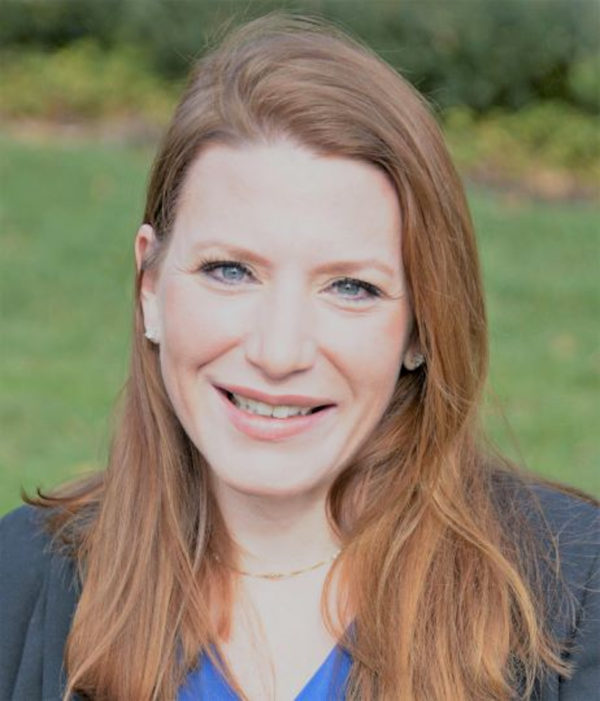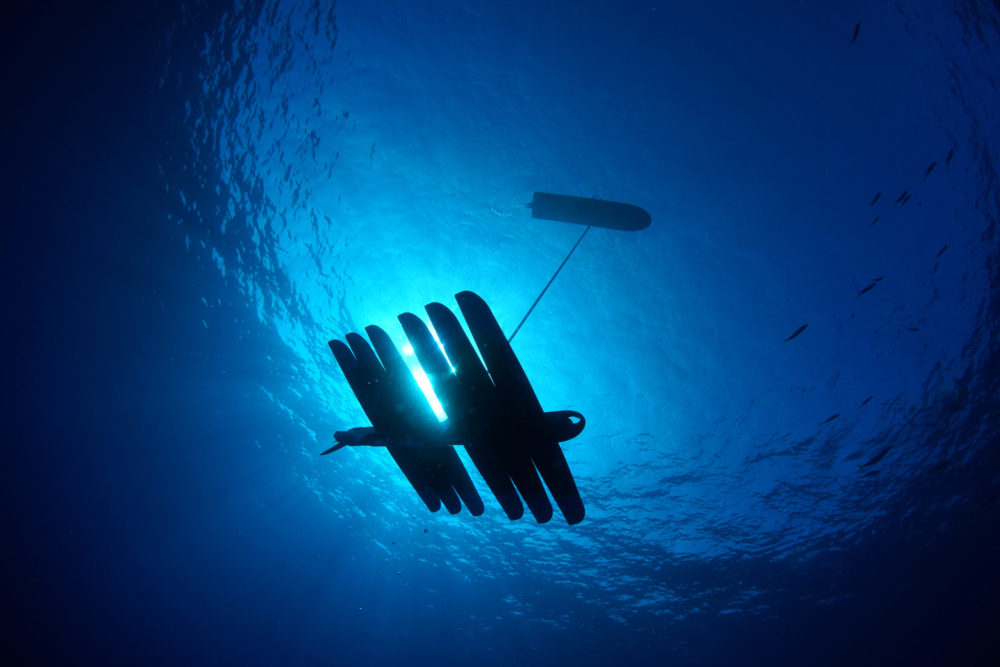A new, two-year project called Project ABLE officially launched this week in Lewes as the Blue Economy Tech Center had its grand opening at the University of Delaware’s College of Earth, Ocean & Environment.
The project aims to position Delaware as a hub of blue technology. It’s the result of congressionally directed spending supported by Delaware’s federal delegation of Sen. Chris Coons, Sen. Tom Carper and Rep. Lisa Blunt Rochester, and the work of Delaware blue tech advocates such as Rob Nicholson.
If you haven’t been following the growth of blue tech in Sussex County, here are the basics: It’s about technology that involves the ocean, including autonomous surface vessels (aka robot boats), underwater robotics and wind turbines. UD is already home to some of the most state-of-the-art aquatic robots, which can be deployed for anything from water rescues and underwater searches to environmental research.
Project ABLE has been in development for about two years, culminating in $1.3 million in funding through the National Oceanic and Atmospheric Administration (NOAA).
What is Project ABLE, exactly?
Project ABLE’s mission statement is succinct: “To make Delaware a leading national center in the application and development of autonomous systems in support of advancing the Blue Economy.” ABLE stands for align, build, leverage and expand.
Delaware’s location in the middle of the Eastern Seaboard isn’t just good for business people commuting between New York and DC — it’s also good for blue tech, an industry that is growing up and down both US coasts, Alaska and the Caribbean.
NOAA estimates that about 40% of the US population lives in coastal counties, and the US blue economy supports millions of jobs, contributing hundreds of billions to the nation’s gross domestic product.
And it’s not just STEM, energy and education that benefit. Local small businesses including retail and restaurants — many of which close during the off season for tourism in coastal towns — will benefit from year-round residents with well-paying jobs.
The impact of blue tech
Kirsten McGregor, founder of Sagax Associates, is an economic development, recovery and resilience consultant who has worked in blue tech for more than a decade, including holding prominent roles such as senior policy advisor on President Obama’s Hurricane Sandy Rebuilding Task Force. She’s worked on blue tech initiatives in Puerto Rico, the Virgin Islands and Rhode Island.
But the Delaware resident had not worked on a blue tech project in the First State before becoming an advisor for UD’s Island Policy Lab and joining with Project ABLE.

“We’re introducing the blue economy as a bigger strategic picture and trying to get that the idea not only lawmakers but to local businesses that are already there,” McGregor told Technical.ly. “Get the community on board and let them know that it’s not just something where ‘Wilmington’ is coming in and telling them what to do.”
That means presenting the concept at “eye level” and telling residents what’s in it for them. As cool as robot boats may be, it may not be clear that they have the potential to impact everyone in these communities is an economically positive way.
“I think that’s a reason they brought me to the table,” McGregor said. “Because there will be talk about the robots and getting their whole geek on, but ultimately people need to see how it will apply to their seafood restaurant.”
While the Blue Economy Tech Center is on a UD campus, the initiative involves several partner universities, including Delaware State University, University of Pennsylvania, University of South Carolina and University of Rhode Island. It also includes private blue tech companies like the Boeing-acquired Liquid Robotics and the Delaware Prosperity Partnership (DPP).
“A key advantage that Delaware has for the blue economy and for blue tech in particular, which can be kind of a broad umbrella, is that we have the assets in place here that are key building blocks to build out the blue economy,” said Noah Olson, director of innovation at DPP. “From an economic standpoint, with the work that University of Delaware is doing down in Lewes, it’s such an asset for us when it comes to working with companies in the industry.”
Project ABLE is a great opportunity for the Delaware region to accelerate innovation, expertise, and shift the mindset towards persistent and scaled autonomous systems for global maritime operations.
Those who visit the new Blue Economy Tech Center can learn about the different autonomous vessels that have done missions as part of Project ABLE, including Liquid Robotics’ Wave Glider technology. This surface and underwater robot that is programmed to gather data as it travels the ocean resembles a surfboard with antennas; attached below, sensors gather data on ocean currents and other potentially challenging conditions and send them to satellites. In 2018, two Wave Gliders collected data for research after the Kilauea volcano erupted and impacted the water surrounding Hawaii’s Big Island of Hawaii.
“Uncrewed systems have been successfully utilized for more than a decade to collect and transmit ocean observing data in real-time for research, offshore energy and defense applications,” said Shane Goodenough, CEO of Liquid Robotics. “Project ABLE is a great opportunity for the Delaware region to accelerate innovation, expertise, and shift the mindset towards persistent and scaled autonomous systems for global maritime operations.”
While blue tech in Delaware is focused on Sussex County and its coastal economy, Project ABLE could impact the whole state, from Kent County farms to the Port of Wilmington.
“There are ways to tie aquaculture and regular agriculture,” Olson said. “It’s an interesting space to be working in, and we’re seeing a lot of attention and action there, because of the increase in sustainable energy across the board, in particular.”
The Blue Economy Tech Center holds events that are open to the community, whether you are an academic, environmentalist or youth interested in going into blue tech in the future — or even just someone who likes robots. To learn about upcoming events, join the Project ABLE (BlueTech@UD) LinkedIn group.







